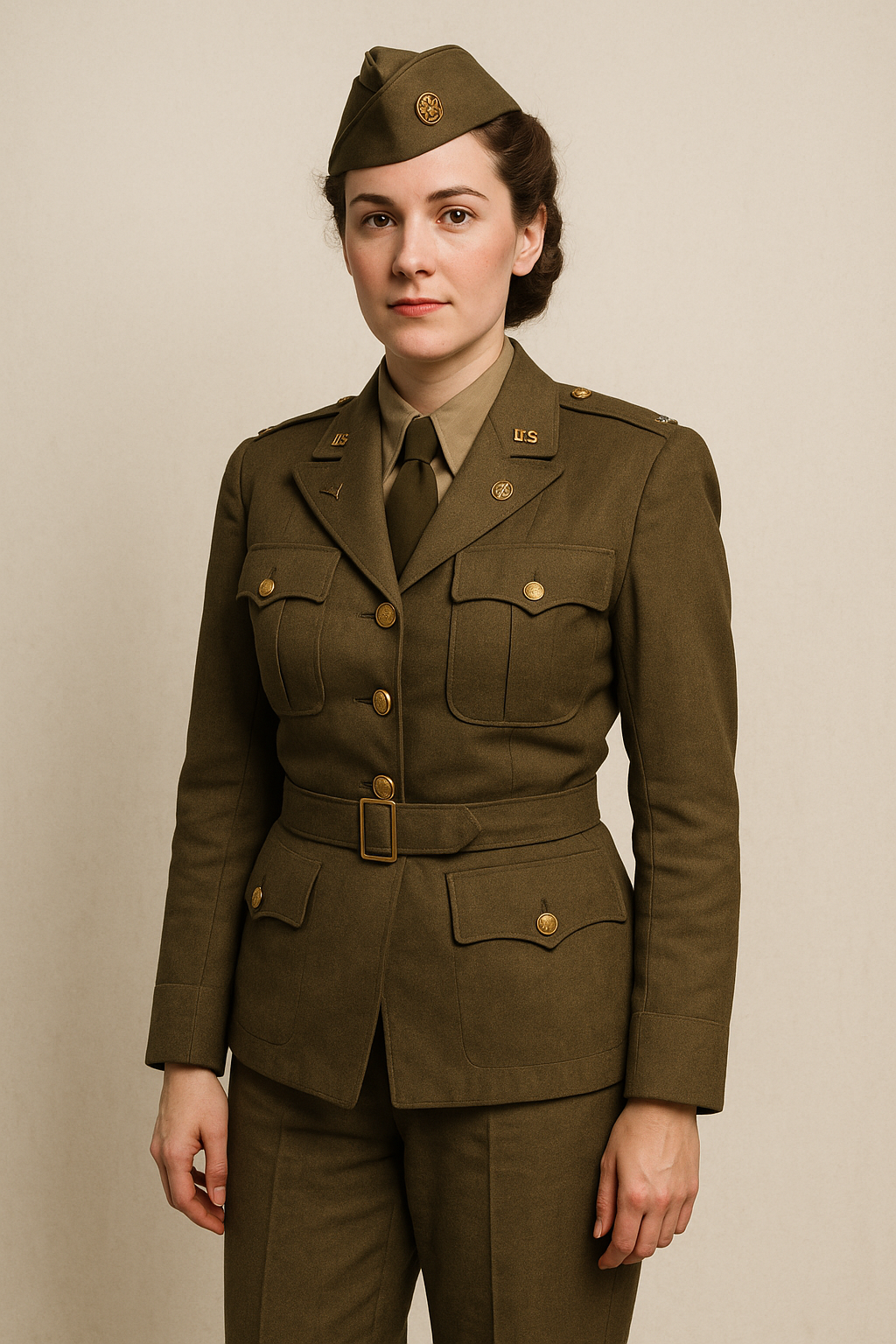
Recreating History: How to Reproduce an Authentic WWII Army Nurse Uniform (and More)
Published on Sep 30, 2025
Introduction:
Did you know that original WWII uniforms can cost thousands of dollars—and still not be completely accurate?
For history buffs and reenactors, accurately reproducing WWII uniforms is more than a hobby; it’s a way to bring history to life. Whether you're interested in restoring a WWII army nurse uniform, a military medic uniform, or an army air corps uniform, this guide will help you avoid common pitfalls, stay on budget, and build something truly authentic.
WWII uniform reproduction combines research, craftsmanship, and passion. If you're new to the scene—or want to improve your current setup—this guide is for you.
Why Focus on the WWII Army Nurse Uniform?
The army nurse uniform is one of the most iconic looks of WWII. It symbolises courage, resilience, and service. Beyond aesthetics, it's a uniform rich in historical detail—from the olive drab wool jacket to the practical army uniform pants and signature caps.
Why Reproduce This Specific Uniform?
- Popular in reenactments and living history events
- Represents women’s vital roles in WWII
- Offers multiple variations across theatres (Europe, Pacific)
- Great entry point for beginners
Step-by-Step: How to Reproduce a WWII Army Nurse Uniform
1. Start with Solid Research
Before you start buying or stitching, gather references:
- Photographs from WWII archives (NARA is a good source)
- Original garment catalogues
- Veteran accounts or memoirs
- Military uniform specification manuals
Don't rely solely on movies or TV—they often take creative liberties.
2. Choose the Right Uniform Type
There were multiple variants of the army nurse uniform:
- Service Dress (Class A): Olive drab wool jacket, skirt, shirt, tie
- Field Uniform: OD pants, shirts, and sometimes combat boots
- Hospital Dress Uniform: White dresses, caps, and sometimes aprons
Each one has its own accessories, insignia, and time period relevance.
3. Sourcing Materials
You have two main options:
- Buy reproduction items: Many vendors offer high-quality reproductions of jackets, skirts, army uniform pants, etc.
- DIY with patterns: Use period sewing patterns to recreate the look from scratch.
Recommended Materials:
- Wool blends (for jackets and pants)
- Cotton (for summer or hospital variants)
- Vintage or replica buttons, patches, and insignia
Essential Components of the Army Nurse Uniform
Here’s a checklist to guide your uniform build:
✅ OD Wool Jacket (with appropriate buttons and shoulder insignia)
✅ OD Wool Skirt or Pants
✅ Khaki or OD Shirt
✅ Army-issue Tie
✅ Army Service Cap or Garrison Cap
✅ Brown Leather Oxfords or Service Shoes
✅ WWII-era Rank Insignia (as applicable)
Pitfalls to Avoid in WWII Uniform Reproduction
1. Mixing Eras
One of the most common mistakes is blending elements from WWI or post-WWII. Always verify if your component was issued during 1941–1945.
2. Incorrect Fabric or Colour
Modern fabric often doesn’t match the original shades (OD #3 or OD #7). Try to get swatches or vendor recommendations before buying in bulk.
3. Over-relying on Surplus Stores
Military surplus can be hit or miss. Some items may have modern alterations or may not match WWII specs.
Adding Authenticity: Military Medic Uniform and Other WWII Roles
If you’re interested in expanding your collection, the military medic uniform and the World War 2 medic uniform are excellent next steps.
Key Features:
- Red cross brassards or helmet insignia
- Canvas pouches and field gear
- White or tan armband with red cross
- M-1941 or M-1943 field jackets
- Medical kits (reproductions available)
Medics were crucial on the front lines, and their gear was distinct and functionally detailed.
Spotlight: The Army Air Corps Uniform
The Army Air Corps uniform also provides exciting options for reproduction:
- Flight suits and leather A-2 jackets
- Wool trousers and service caps
- Pilot wings and squadron patches
- B-4 or B-10 jackets, depending on the era
For collectors and reenactors, the Air Corps uniforms are particularly collectible due to their unique insignia and iconic style.
Tips for Beginners: How to Start Without Breaking the Bank
- Start with one complete set (e.g., a field or dress nurse uniform)
- Look for uniform swap groups on Facebook or reenactment forums
- Buy in phases – get the essentials first, then add details
- Learn basic sewing – being able to hem or fix tears can save you money
- Use mannequin displays at home to protect and enjoy your work
Trends in WWII Uniform Reproduction (2025 Update)
- AI-enhanced fabric matching tools are now helping crafters find accurate fabric shades.
- 3D printed insignia is growing among DIY reproducers—cheaper and historically accurate.
- Digital archives now allow you to search veteran photos by division/unit.
- Women’s roles in reenactments and uniform reproduction are gaining popularity, especially the army nurse uniform.
Conclusion: Bring History to Life with an Authentic Army Nurse Uniform
Reproducing a WWII army nurse uniform is more than just stitching together old clothes—it’s about preserving history, honouring service, and telling stories through accurate detail. Whether you’re creating a display piece, building a cosplay, or preparing for a reenactment, these steps will guide you to authenticity.
With attention to detail, a bit of patience, and a true passion for the past, you can recreate the valour, strength, and resilience symbolised by uniforms like the military medic uniform, World War 2 medic uniform, and Army Air Corps uniform.
